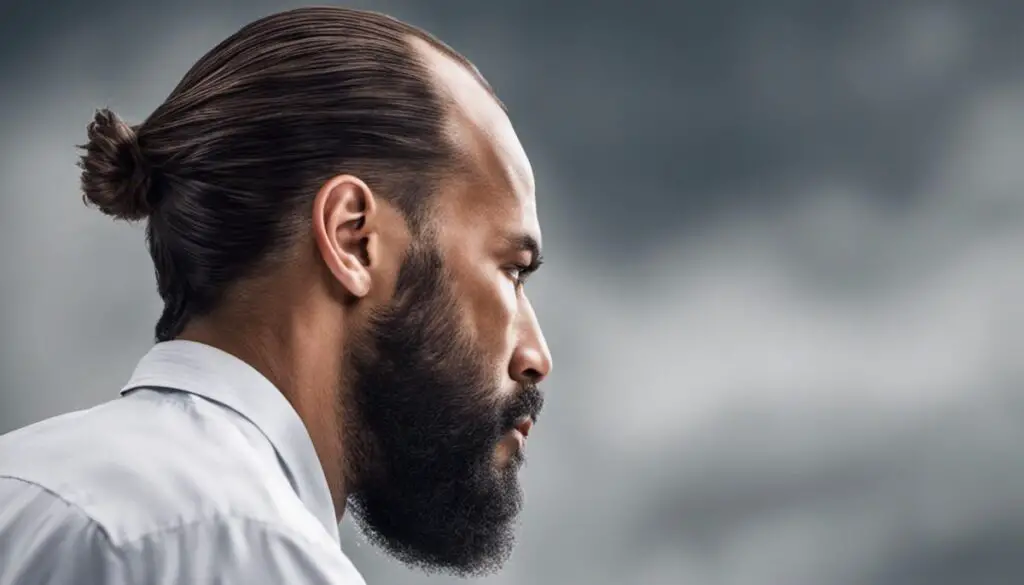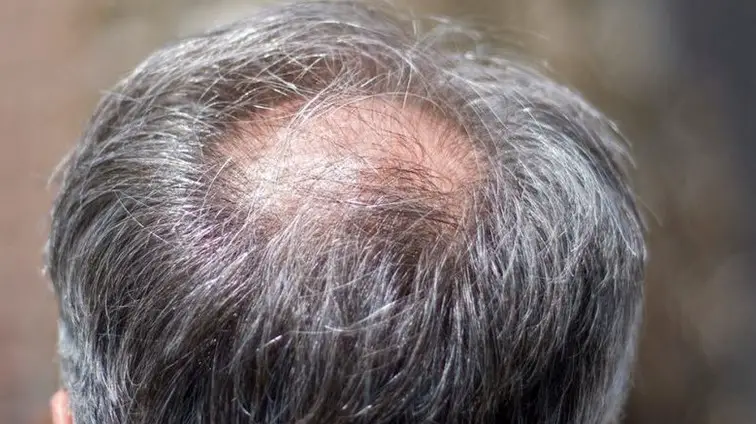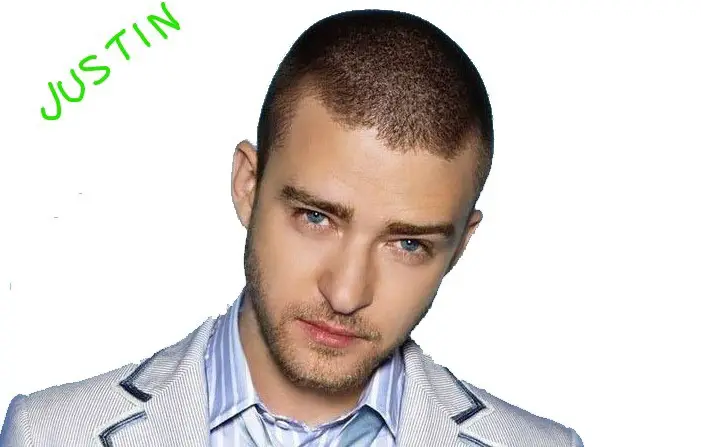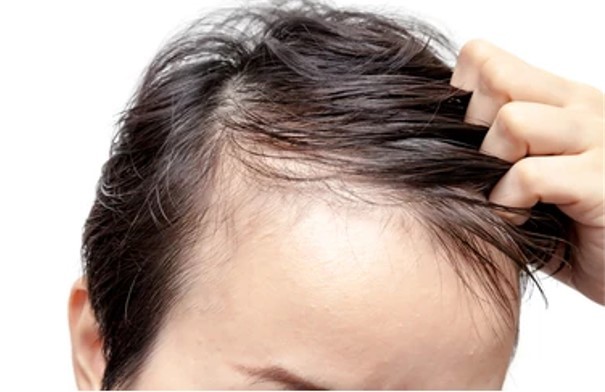If you’re dealing with an early receding hairline, you’re not alone. In this blog post, we’ll explore the causes of this issue and some possible solutions.
You may have noticed a gradual change in your appearance that’s not due to age, like an ever-widening gap in your hairline. If so, you’re not alone: early receding hairlines are a widespread concern, affecting both young men and women. This phenomenon often disrupts the natural hair growth cycle and may deeply impact an individual’s self-esteem and personal relationships. In this comprehensive exploration, we’ll delve into the intricacies of early-onset hairline recession. We’ll examine its root causes—which may span genetic factors, hormonal imbalances, diet, stress, and lifestyle—and explore substantial scientific studies that validate these triggers. Additionally, we’ll probe the poignant psychological effects of a shrinking hairline and, importantly, offer evidence-based strategies for mitigation.
- Early receding hairlines are common among young adults and impact self-esteem.
- Key signs include an M-shaped hairline and a thinning crown.
- The normal hair growth cycle is affected, leading to hair loss.
- DHT hormone plays a crucial role in hair thinning.
- Family history is a significant factor in early onset.
- Persistent stress can exacerbate hair loss.
- Diet and habits like smoking can negatively impact hair health.
Understanding Receding Hairline
A receding hairline is a type of hair loss where the hair around the temples and above the forehead begins to thin or fall out. This condition is most commonly associated with male pattern baldness, but it can also occur in women. There are several potential causes of a receding hairline, including genetics and age. However, early onset receding hairlines can occur in young men and women due to factors such as hormonal imbalances, stress, poor nutrition, and certain medical conditions or treatments.
Identifying the Signs of a Receding Hairline
Early signs of a receding hairline can at times be subtle. You may notice your hairline appears to be gradually moving back, creating an M-shape or a high forehead. Other signs can include a thinning crown, hair that’s slow to grow or appears thinner, or a sudden increase in the amount of hair you shed. You might also experience a change in texture; hair may become brittle, dry, or limp.
You will like: Signs Of Balding At 20
The Hair Growth Cycle and How Receding Hairlines Disrupt it
The hair growth cycle is made up of four stages: anagen (growth), catagen (transition), telogen (rest), and exogen (shedding). Normally, most of the hair on your head is in the anagen phase, while only a small portion is in the other three stages. With a receding hairline, however, this cycle gets disrupted. The hairs on the temples and the top of the scalp tend to spend less time in the anagen (or growth) phase and more time in the telogen (rest) phase. This decrease in the growth phase means hairs will not grow as long before they fall out, leading to a shorter, thinner appearance and eventually leading to baldness in the affected areas.
Hormones Role in Early Receding Hairline
In both men and women, hormones play a significant role in hair health. The hormone dihydrotestosterone (DHT), a byproduct of testosterone, is believed to be a key factor in male pattern baldness. DHT shrinks hair follicles, shortening the hair growth cycle and causing hair to thin. Women also produce a small amount of testosterone and DHT, which means they can also experience hairline recession due to hormone imbalances. Other hormonal imbalances, such as thyroid issues, can also cause hair loss in both men and women.
Understanding the Early Onset of Receding Hairline
Receding hairline typically becomes conspicuous in individuals in their late 20s or early 30s. However, some men and women experience this as early as their adolescence or early adulthood, a situation known as early onset receding hairline. Family history plays a crucial role in this as those who inherit the susceptibility to hair loss often start showing symptoms earlier. While genetics could be a major factor, other triggering elements include traumatic experiences, physical or emotional, severe stress, lack of proper nutrition, and certain medical conditions such as polycystic ovary syndrome (PCOS) in women, and some autoimmune diseases. It is noteworthy to mention that an early receding hairline is not merely a visual concern but could possibly signify underlying health problems; thus, seeking professional medical advice is highly recommended.

Causes of Early Receding Hairline
Influence of Genetics on Early Receding Hairline
Genetic predisposition has proven to have a profound impact on the early onset of receding hairline; commonly referred to as ‘male pattern baldness,’ but also quite prevalent in females. Research indicates that a significant percentage of individuals who encounter early hair loss have other family members affected as well. This supports the fact that there’s a familial predilection for early hair loss, encoded in the genes handed down from generation to generation. Intriguingly, the inheritance does not solely rely on the father’s side, the so-called ‘baldness gene’ can also be passed down from the maternal lineage.
Hormonal Imbalances as a Cause
Aside from genetics, hormonal imbalances are another significant factor influencing early receding hairline. Specifically, an androgen (male hormone) called dihydrotestosterone (DHT) is central. Once the levels of DHT increase or the hair follicles become sensitive to it, hair growth slows down and hair follicles get smaller. Over time, this leads to thinner, shorter hairs and eventually, the hair growth can stop entirely.
Stress and Early Receding Hairline
Modern life is often filled with stress, from financial concerns to work-related pressure, and it can significantly impact one’s health, including hair health. When the body experiences stress, it can disrupt the normal hair cycle, pushing hair to the shedding phase prematurely. This condition, known as telogen effluvium, can eventually lead to an early receding hairline if the stress persists or if the individual is genetically predisposed.
Influence of Diet and Lifestyle Habits
Diet and lifestyle habits can also contribute to an early receding hairline. Inadequate nutrients might leave hair follicles undernourished, accelerating hair thinning and receding. For example, diets deficient in proteins, vitamins, and iron can slow down hair growth and make hair weak. Additionally, lifestyle habits like smoking and alcohol consumption can worsen hair health. Toxic substances in cigarettes can harm hair follicles, while alcohol can result in dehydration, which may make hair dry and brittle, further contributing to hair loss.
Scientific Studies and Evidence
Several scientific studies and evidence support the claims regarding the causes of an early receding hairline. For instance, research published in the American Journal of Human Genetics, highlighted the role of more than 250 independent genetic regions associated with severe hair loss. Additionally, a study in the Archives of Dermatological Research found a strong link between stress and changes in hair follicles. Other studies have identified a correlation between nutrient deficiencies or unhealthy lifestyle habits and hair loss, cementing the need for a balanced diet and lifestyle to maintain hair health.
Understanding Early Receding Hairline Causes
The underlying factors of an early receding hairline can differ for everyone, most often involving a blend of genetics, hormonal shifts, stress levels, one’s diet, and lifestyle habits. For a more comprehensive understanding and potential solutions or treatments, continuous research into this area is vital.
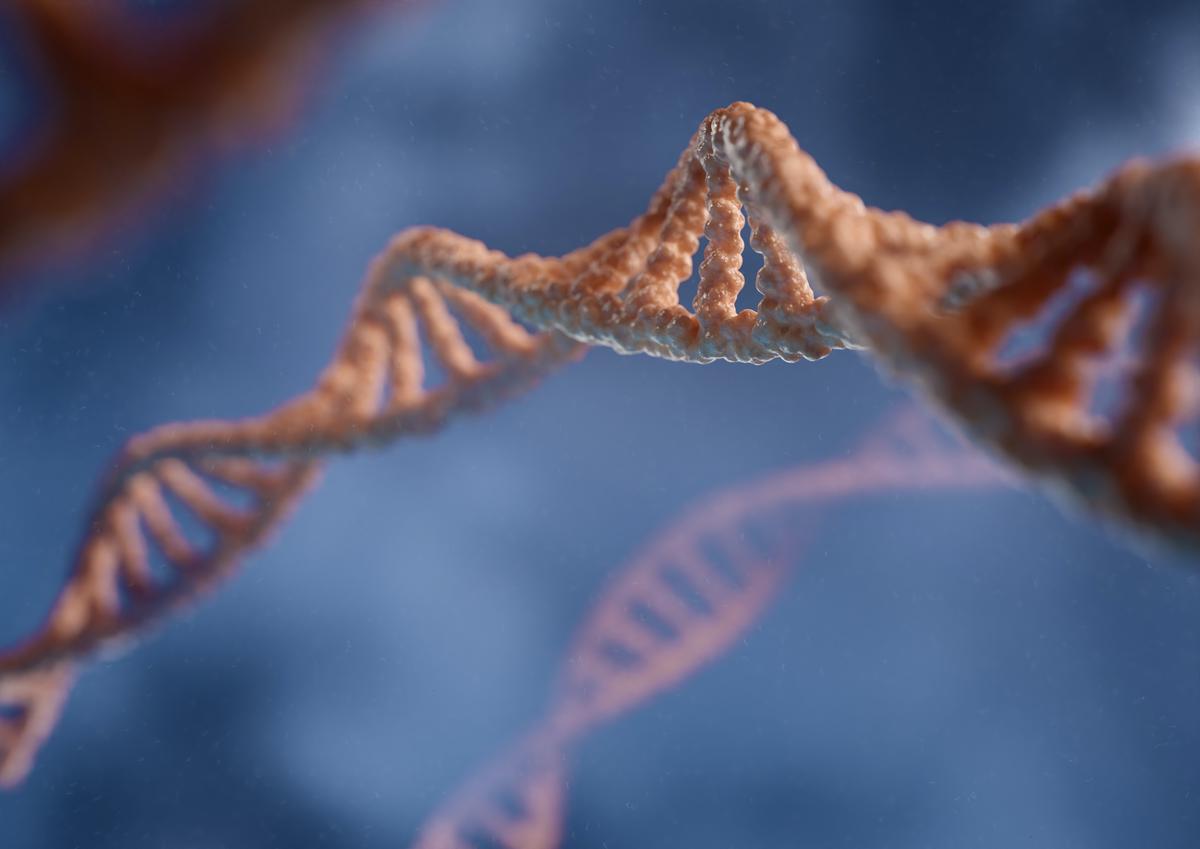
Psychological Impacts of Retreating Hairlines
Emotional Implications of an Early Receding Hairline
Notably, hair loss often equates to aging and the waning of vitality. Thus, experiencing this naturally progressing phenomenon prematurely can evoke substantial emotional distress. An early receding hairline can cause individuals to battle issues surrounding self-worth, often leading them to feel less appealing or enviable when compared to their peers with fuller hair. This process is also viewed as a symbol of youth and vigor loss, evoking unsettling and dejecting feelings, especially those in their most productive years.
Societal Perception of Receding Hairline
Society often perceives early onset of hair loss as a sign of premature aging. The societal pressure can induce unnecessary anxiety and emotional stress on the individuals experiencing early receding hairline. Hair, considered as a symbol of good looks and attractiveness by many, significantly influences the perception of physical appearance. The societal bias towards those with a full head of hair can sometimes stigmatize those experiencing early hair loss, which exacerbates the emotional trauma.
Influence on Personal Relationships
The onset of early receding hairline not only affects how individuals perceive themselves, but also how their partners or potential partners perceive them. For some, the change in appearance can impact the dynamics of their relationships. It can lead to feelings of inadequacy or lowered confidence, which can adversely affect intimate relationships.
Receding Hairline and Professional Life
Early receding hairline can also generate concerns related to professional life. Appearance plays a significant role in professional realms, affecting job interviews, networking, and promotional opportunities. Individuals affected by hair loss may feel less confident, which could impede their performance or deter them from exploring new opportunities.
The Need for Support and Coping Strategies
Recognizing the psychological impact of early receding hairline, it is essential for individuals to seek support and employ coping strategies. Self-care routines such as regular exercise and proper nutrition can boost one’s self-esteem. Hair loss acceptance, stress management techniques, and therapy can also provide significant emotional relief. Medical interventions like hair loss treatments, or in some cases, procedures like hair transplant can restore self-confidence.
In a society where physical appearance often matters greatly, coping with an early onset of hairline recession can be emotionally taxing. Knowledge about the psychological impacts, combined with fostering an environment that values personal differences, can be instrumental in reducing the emotional strain of dealing with premature hair loss.
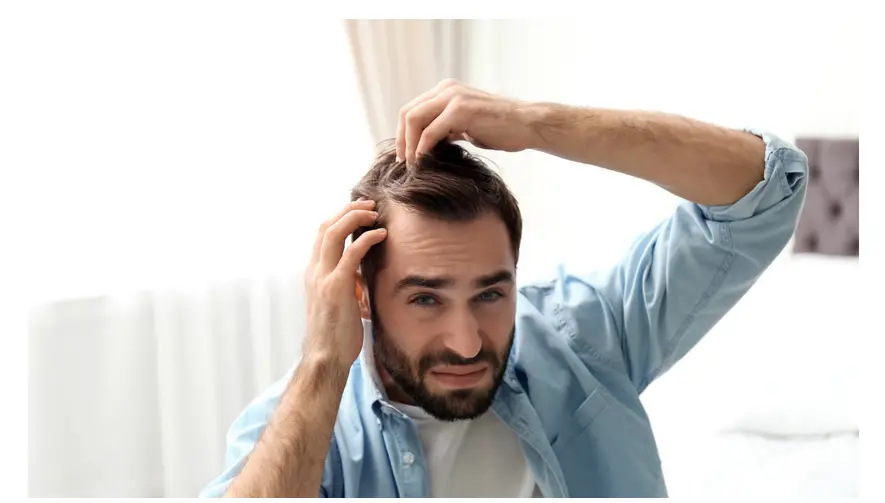
Preventing and Slowing Down Hairline Recession
Mitigating Hairline Recession: The Role of an Optimized Lifestyle
Androgenetic alopecia, commonly known as early receding hairline, is a prevalent issue among males that is frequently dictated by genetic factors. Regardless, adopting certain lifestyle changes can significantly prevent or decelerate the advancement of hairline recession.
No doubt diet plays a crucial role in hair health, with evidence suggesting that a diet abundant in specific vitamins and minerals might avert hair loss. Vitamins B, C, D, E, along with zinc, protein, and omega-3 fatty acids are essential for nourishing hair and maintaining a healthy scalp. Incorporating foods rich in these nutrients, like fish, leafy greens, nuts, seeds, eggs, and berries, into your everyday diet can fortify hair follicles and stimulate hair growth.
Engaging in regular physical exercise is another essential factor. Physical activities enhance blood flow in the scalp, facilitating the transportation of nutrients to the hair roots, a key factor in hair regrowth. Activities as simple as walking, jogging, swimming, or practicing yoga can aid in maintaining healthy scalp circulation.
Lastly, eschewing destructive habits such as smoking and excessive drinking is also paramount. Both nicotine and alcohol can impair the absorption of essential nutrients, resulting in hair thinning and accelerated hair loss.
Addressing Early Receding Hairline through Stress Management
Stress is a significant factor that can contribute to early receding hairline. Chronic stress can disrupt the normal growth cycle of hair follicles, leading to hair shedding. Hence, stress relief techniques, such as meditation, deep-breathing exercises, yoga, and mindfulness, can offer significant benefits. These practices relax the mind and body, reducing stress levels and, in turn, potentially thwarting hair loss.
Having adequate sleep is another critical aspect of stress management. Poor sleep can trigger hair loss since it can disrupt the hair’s natural growth cycle. Aim for at least 7 to 9 hours of restful sleep each night.
Early Receding Hairline: Understanding Preventative Measures
One’s first approach to managing an early receding hairline can be taking proactive steps like starting treatment methods known to either slow down the process or prevent it altogether. This can include using topical solutions like Minoxidil, known more widely as Rogaine, or oral medications like Finasteride, marketed as Propecia, both of which should be prescribed by a healthcare provider. Furthermore, incorporating naturally derived plant-oils such as rosemary and peppermint into one’s daily routine can promote hair growth and help maintain hair health.
Finally, it should be noted that complete prevention of an early receding hairline may not always be possible, especially when genetic factors are at play. However, maintaining a healthy lifestyle, managing stress levels, and considering medical interventions when necessary can significantly help in slowing down hairline recession. Regular check-ups with a healthcare provider or a dermatologist are also advised for early detection and appropriate treatment.

Medical and Cosmetic Treatment Options
Understanding Medical Treatment Options for Early Receding Hairline
A host of medical treatments are available to manage an early receding hairline, and this includes Minoxidil, a topical solution widely recognized as Rogaine. Originally formulated for managing high blood pressure, Minoxidil has been found to dilate blood vessels, thus, improving the supply of nutrients to the hair follicles. Regular application can help in promoting hair regrowth and slowing down hair loss, though one must be patient as visible results may take several months to appear.
Meanwhile, another FDA-approved medication for treatment is Finasteride, sold under the brand name Propecia. It works differently from Minoxidil – its main role is inhibiting the production of an enzyme called 5-alpha reductase. This enzyme is responsible for converting testosterone into dihydrotestosterone (DHT), a potent hormone that causes hair follicles to shrink. Finasteride is an oral medication and can significantly support the prevention of hairline recession.
Surgical Procedures
Hair transplant surgeries have also gained popularity as treatment options for receding hairlines. These surgeries mainly involve harvesting hair from donor sites, usually from the back or sides of the head, and grafting into the receding or thinning areas. These procedures can be quite costly and require a considerable amount of recovery time. Proper consultation with a certified dermatologist or surgeon is necessary to explore and understand these surgical options.
Hair Styling Techniques
Aside from medical and surgical treatments, there are also non-invasive cosmetic ways to deal with early hairline recession. Hair styling techniques can be a practical and cost-effective method. For instance, hairstyles like a close crop, buzz cut, or shaven look can make the receding hairline less noticeable. Adding volume to the hair can also create an illusion of a fuller hairline. Styling products such as mousses and volumizing sprays can help achieve this look.
Effective Products in the Market
Several over-the-counter products claim to combat hair loss as well. These include hair loss shampoos, conditioners, and serums fortified with vitamins and nutrients beneficial for hair health. These products often contain ingredients like Biotin, Keratin, Argan oil, and Saw Palmetto – all linked to promoting hair growth and reducing hair loss. It’s recommended to consult with a medical professional before starting any new hair loss product to ensure it’s safe and appropriate for your specific situation.
Holistic Approaches and Lifestyle Modifications
Furthermore, adopting lifestyle modifications can slow the progression of hair loss as well. Dietary changes to include nutrients essential for healthy hair growth (like proteins, vitamins A, C, and E, Omega-3 fatty acids, and minerals like Iron and Zinc) may help. Regular exercises, stress management techniques, and refraining from harmful hair care practices (like vigorous brushing, excessive heat styling, or the use of harsh chemical-laden products) are also recommended.
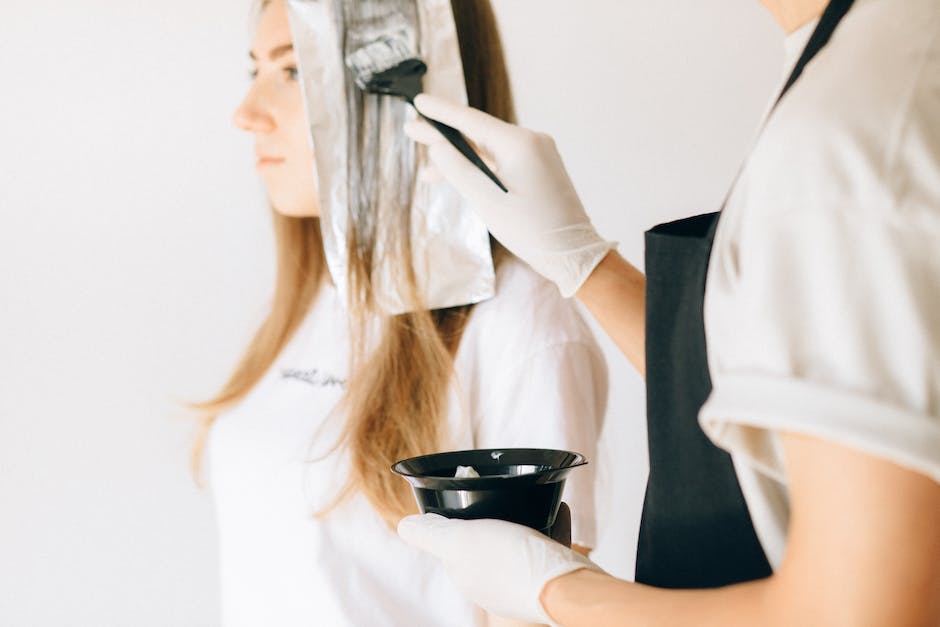
Despite the challenges an early receding hairline may present, it’s crucial to remember that you’re not powerless. By implementing healthy lifestyle modifications, managing stress effectively, and incorporating beneficial dietary changes, you can either delay or prevent further hairline recession. There are also several medical and cosmetic treatments available—from medications and surgical procedures to hair styling techniques and products—that can significantly improve your condition. However, it’s important not to pursue these treatments lightly. Reach out to a trusted healthcare provider to discuss your options. Remember, your hair doesn’t define your worth; it’s merely one component of your unique identity. Take the time to understand your situation, explore every avenue available, and find the solution that best fits your lifestyle and comfort.
- AI Powered Bald Filter Online 2024: See Yourself with No Hair! - January 19, 2024
- Harklinikken Bad Reviews 2024: Analyzing Negative Feedbacks - January 18, 2024
- How to Get the Alex Eubank Hair | Step-By-Step Tutorial 2024 - January 18, 2024

